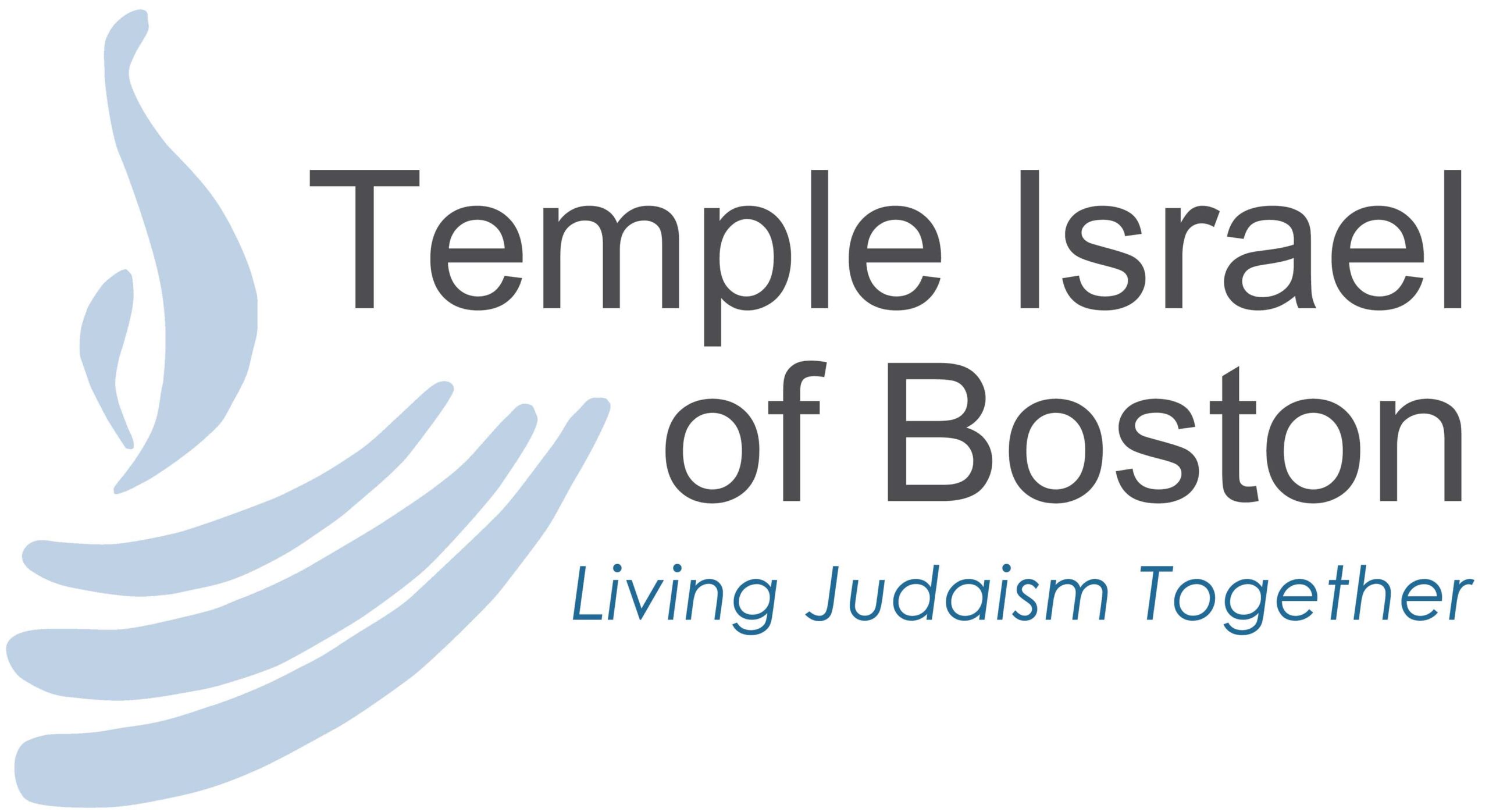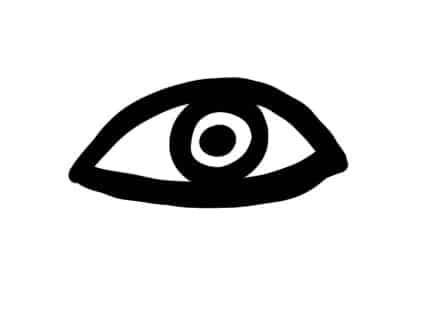
Jewish tradition sets the ten days between Rosh Hashanah and Yom Kippur as a time for t’shuvah, a shared journey of reflection in which we examine our lives as individuals and as a community in order to turn from ways that are hurtful and destructive and more fully embrace the compassionate justice that is the heart of our faith.
In that spirit, this year – for the sixth year – we continue to reflect on the sin of racism, one of the most powerful social malignancies threatening our world today. We are alarmed by the resurgence of militant white supremacism and antisemitism. We are disheartened by the ongoing discrimination against people of color that is endemic in our social, economic, and political structures. The Racial Justice Initiative at TI will share a spectrum of resources for experiences and actions designed to frame individual and communal reflection on issues of racial inequality, privilege, discrimination and injustice. Yet we are hopeful that this is an opportune time for real change.
For the first time, we will culminate our #10Days10Ways experience with a live, mixed-presence gathering on Yom Kippur afternoon at 2:30 p.m. in our chapel. We hope you will be able to join us in this exciting opportunity for reflection and community building.
Join our Facebook group to receive daily stories and to interact with others on this journey. Questions? Email Temple Israel’s Assistant Director of Social Justice Engagement Tali Puterman.
2022 Schedule
DAY 1: 9/25/22
Story: Tali Puterman (Temple Israel)
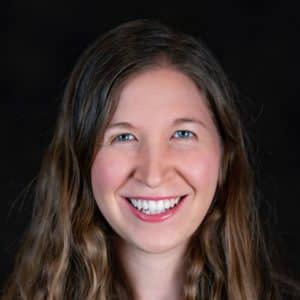 The first time I tried to enter Temple Israel, I could not get in. It was the first year of my “adult” life, and I was tasked with figuring out the logistics of having my first apartment, paying for rent, electricity, and internet, as well as navigating the city of Boston by car and public transport, all while struggling at my first job teaching preschool and kindergarten in Jamaica Plain and with my family far away in South Africa. I needed some extra money and I had seen a listing on Jewishjobs.com for a religious school teaching position at a reform synagogue named Temple Israel. I was confident I would be a shoe-in for this position considering I was a full-time teacher and a practicing Orthodox Jew who had attended Jewish day school and camps all my life. I would be a perfect hire… if I could just figure out how to enter the building. This was right before the time of ubiquitous iPhones with built-in GPS systems and I had been driving around the Longwood area following the street signs. When I had finally found a parking spot (I didn’t know about Nessel Way or the adjoining garage), I was stressed out and desperately trying to enter through the door by the kitchen, which at the time did not have signage directing people to Nessel Way. Eventually, a passerby noticed me and showed me how to get in. Now, late for my interview for a religious school teaching position, I wondered if indeed this place was going to be a perfect fit for me.
The first time I tried to enter Temple Israel, I could not get in. It was the first year of my “adult” life, and I was tasked with figuring out the logistics of having my first apartment, paying for rent, electricity, and internet, as well as navigating the city of Boston by car and public transport, all while struggling at my first job teaching preschool and kindergarten in Jamaica Plain and with my family far away in South Africa. I needed some extra money and I had seen a listing on Jewishjobs.com for a religious school teaching position at a reform synagogue named Temple Israel. I was confident I would be a shoe-in for this position considering I was a full-time teacher and a practicing Orthodox Jew who had attended Jewish day school and camps all my life. I would be a perfect hire… if I could just figure out how to enter the building. This was right before the time of ubiquitous iPhones with built-in GPS systems and I had been driving around the Longwood area following the street signs. When I had finally found a parking spot (I didn’t know about Nessel Way or the adjoining garage), I was stressed out and desperately trying to enter through the door by the kitchen, which at the time did not have signage directing people to Nessel Way. Eventually, a passerby noticed me and showed me how to get in. Now, late for my interview for a religious school teaching position, I wondered if indeed this place was going to be a perfect fit for me.
Here I am eight years later, and I could not have guessed how perfect a fit for me Temple Israel would be. I could not have known that I would go from a part-time second and fifth grade teacher to a full-time social justice educator and community organizer, and now the director of racial equity, diversity, inclusion and justice organizing (although I can always rely on a lengthy title!). I could not have imagined that the Temple Israel community would teach me I could be gay and Jewish, when previously I thought I had to choose. I could not have known that I would meet my wife at Temple Israel’s Shabbat Tzedek, introduced by a Temple Israel congregant.
Racial Equity, Diversity, and Inclusion (REDI) work was not work that I was born to do. As a young white girl growing up in post-Apartheid South Africa, I did not see my privilege. I did not see the systems and structures that were designed to give me a boost and push others down because of the color of the skin we were born into. I did not want to see them because I was benefitting from them — or so I thought. It was not until I expanded my relationships outside of my insular Orthodox community, which helped me realize the otherness in me that I had been suppressing, and I was able to come out and be who I truly am. I want that for everyone.
Living in a same-sex, multi-racial marriage has opened my eyes first-hand to a world of discrimination: such as when a server will serve every single customer and intentionally walk right by us, or we will be the only people ignored in a shoe store, with workers jumping over themselves to serve the other customers coming in after us (both of these situations happened in the same weekend this summer in Maine). Temple Israel is engaged in efforts to draw awareness to implicit biases so that our queer and Black, Indigenous, and People of Color (BIPOC) community members do not feel othered when they are here with us.
I could not have known that we would become foster parents to a transgender teenager, and then two incredibly smart and resilient black girls. Each of these circumstances opened our eyes more widely to a world not set up to include non-traditional families. Temple Israel is engaged in diversity awareness efforts so that people can be their true selves with us.
I could not have guessed that Temple Israel would be there for me during the debilitating sickness of my mother when she was diagnosed with brain cancer and then passed two year later. I watched my mom go from a young and active 52-year-old nurse to a 53-year-old woman who looked typical on the outside, but had lost her ability to read, to drive, to stand for long periods of time. Eventually losing many more abilities, she passed at the age of 54, but she never lost her spirit. Being with my mother through her illness showed me a world I had never seen before, one so inaccessible, impatient and sometimes cruel to those with invisible disabilities. Temple Israel is committed to working on our inclusivity efforts and providing accommodations that allow all people to participate.
In some ways, my personal journey is reflected in the synagogue’s REDI work, because eight years ago, my family in its current makeup likely would not have felt as comfortable and accepted as we do today. I am lucky that Temple Israel has been a welcoming place to me and my family, but I recognize that we are not that for everyone, and we still have work to do.
Leading our REDI work is not easy, but it is beautiful. We have such a rich and committed team including our fantastic congregants and lay-leadership, without which we would have nothing done. Our clergy and senior leadership and staff are deeply committed and active in this work. Our REDI team has expansive goals that touch all aspects of our synagogue including but not limited to the way we think about and practice community safety, human resources policies and procedures, communication, how we interact with each other, models for leadership development, school curriculum, the structure of our membership and dues model, and how to respond when we see or experience instances of racism or discrimination.
We have timelines, systems, and strategies in place in the hopes of making a long-term culture shift where everyone will feel a sense of belonging at Temple Israel, while never forgetting our prime purpose of being a synagogue and a place for people to live Judaism together. We see these goals as working together toward a common mission. We are such a large synagogue rich with diverse perspectives and lived experiences and we accept that we will not achieve everything we have set out to do, at least not yet. We still have issues and moments of disagreement and we recognize that, and we also want to recognize our successes.
My hope for our community in this #10Days10Ways journey is that you will see many of the successful efforts of our REDI work and acknowledge that we still have much work to do. I hope to raise awareness of the tools and opportunities our REDI Team has developed for congregational involvement. I hope the stories over the next nine days will help you reflect on the role you can play in this work and specific actions you can take to help this work move forward. I hope these stories will introduce you to some faces in our community that you didn’t know before — and please hear me — we want to know you too. We want to tell you that you belong here. We hope you will join us on this journey.
Reflect
Tali describes a barrier — a locked door — when trying to enter Temple Israel the first time. What are the “doors” (physical or metaphorical) standing in your way to fully entering the Temple Israel community? What are the “doors” you might be putting up as barriers to others?
When have been the moments that have opened up your eyes to the ways the world can discriminate against people with marginalized identities? How have these moments shaped you?
Act
Invite a friend or family member, or two to participate in this year’s #10Days10Ways Campaign with you. You can consider setting up an accountability system in which you check in with each other each day.
DAY 2: 9/26/22
Story: McKenzie Johnson
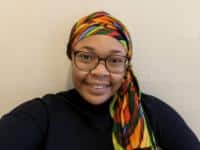 The Torah teaches us that we are all created b’tzelem elohim; in the image of God. When I first started coming to Temple Israel in the summer of 2021, as a queer, Black person coming from Trump’s Florida, my expectations around acceptance and belonging were very low. In Florida, I had found myself closeted in all ways: spiritually, emotionally, and unable to give space to my relationship with queerness and my own gender identity. I became a very closed off person, and being part of the TI community has played an instrumental role in helping me deal with the emotional backlash from the environment from which I came. This community has not only shown me that I can be accepted by others, it has taught me how to accept myself. I am created b’tzelem elohim.
The Torah teaches us that we are all created b’tzelem elohim; in the image of God. When I first started coming to Temple Israel in the summer of 2021, as a queer, Black person coming from Trump’s Florida, my expectations around acceptance and belonging were very low. In Florida, I had found myself closeted in all ways: spiritually, emotionally, and unable to give space to my relationship with queerness and my own gender identity. I became a very closed off person, and being part of the TI community has played an instrumental role in helping me deal with the emotional backlash from the environment from which I came. This community has not only shown me that I can be accepted by others, it has taught me how to accept myself. I am created b’tzelem elohim.
As I began to participate in Temple Israel services and programs, word about the Racial Equity, Diversity, and Inclusion (REDI) culture shift seemed everywhere. Wow, this is really happening here! I had thought, amazed. I know many people who are queer and/or Black, Indigenous, and People of Color (BIPOC) identifying and they are very cautious about Jewish spaces. I’ve heard stories about this temple and that temple and the awful experiences my friends have faced. Coming in as a black person in the conversion process, I had no expectations that I would be accepted. I understood myself to be coming into a new community and I worked very hard to look like I belonged. I would always make sure to wear a visible chai necklace, that I knew when to stand, which direction to face, and which pages to be on during services. Early in my Temple Israel experiences I took part in a REDI Conversation wherein we discussed examples of what not to say to BIPOC people (and what we can say instead) – this was the laundry list of questions and comments my BIPOC friends had warned me about that I would receive in Jewish spaces. I was very pleasantly surprised that this was not my experience. Perhaps something has really started to change, or maybe I’m not being exposed to those who make people like me feel unwelcome, I wondered.
Part of my experience as a Black jewish convert is unique because I had no expectations that people would immediately welcome and accept me. Just like I was being challenged and tested in the conversion process to see if I was serious about my Jewish identity, I too was testing the community to see if I would be accepted with my multiple identities. Thankfully, I have felt completely accepted by the Temple Israel community. I belong when I’m in Torah Study and I bring up a perspective due to my lived experiences as a Black person and I’m thanked for sharing that perspective that others hadn’t thought of before. I belong when I’m seen as Jewish without having to be Black first, without having to explain why Judaism, why now, and what I’m doing here. I belong when I said Kaddish on Juneteenth because it was important to me to remember the people who did not make it to their liberation. I am grateful for a place where people are not shocked when I enter a room.
This was my experience until the day that I converted. Now – finally – I truly did belong. I could drop my low expectations as I no longer was a guest in the space, but a true community member. After being at the Temple almost daily (sometimes multiple times a day) during my conversion process engaging in daily minyan, Torah Study, classes, and everyday synagogue life, the day had come and I was officially part of the tribe. My ears still wet with mikveh water, a well-meaning congregant approached me with the rapid-fire questions I had been warned about. “Are you Jewish?”, “Where did you come from?”, “How did you end up here?”. This was a sudden jolt back to reality. I was finally Jewish but I could not enjoy the moment because I was being reminded how difficult it was going to be for me. All of a sudden, I felt not only as though I didn’t belong, but that my presence was in fact a spectacle or disruption.
Realistically, as much as the synagogue has been able to positively achieve thus far with a REDI Culture Shift, we can only go as far as society and each of our community members will allow. We are always going to have more work to do, because racial inequality isn’t going anywhere. As much as I admire the TI Clergy, it’s the congregants that have made my experience at Temple Israel special. It’s the congregants in daily minyan, the members sitting next to me in services, seated beside me in class. We are a community full of people with different opinions, life stories, and perspectives. We won’t always reach resolution, but we can still move forward by getting to know each other and building connections over our differences and finding our similarities.
Reflect
McKenzie mentions working very hard to show that she belongs in a synagogue space by visibly wearing a chai necklace and learning all the pages in the prayer book. Have you ever felt that you needed to work extra hard to look like you belong in a space? How did that impact your experiences?
McKenzie talks about the importance of the congregants in creating a community of belonging. What do you think about the idea of personal accountability for communal change? How might you have responded if you witnessed the interaction described between McKenzie and the congregant? If you were the one who had misstepped, how might you respond now?
Act
Temple Israel’s REDI Team has created community norms. Our community embraces these norms, drawn from Jewish values, for conversations and other interactions at our synagogue. We call on everyone in our community to take individual responsibility for upholding these norms. We ask you to use these in meetings or other group spaces in which you participate.
DAY 3: 9/27/22
Story: Carol Michael
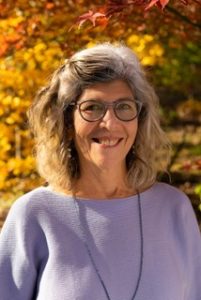 In 1989, my family and I moved from New York to Brookline and lived in an apartment building that looked like a castle. Longwood Towers had a restaurant, two knights in armor, two grand pianos, doormen who greeted us with brass luggage dollies for our groceries, women who greeted us behind a very grand desk, and a room just for parties, all on the ground floor.
In 1989, my family and I moved from New York to Brookline and lived in an apartment building that looked like a castle. Longwood Towers had a restaurant, two knights in armor, two grand pianos, doormen who greeted us with brass luggage dollies for our groceries, women who greeted us behind a very grand desk, and a room just for parties, all on the ground floor.
Across the street was the T, the Muddy River, a bridge that crossed over to the Riverway and a grand building on the far corner – Temple Israel. Adorned by a magnificent sculpture, columns reaching toward the sky, unsurmountable steps for our son, and massive shut doors, it looked like a Greek or Roman temple. How did one get in? Who knew that the front was actually the back?!
We moved to Brookline because the school department agreed to include our son in a local elementary school with the support he needed. With severe developmental disabilities and uncontrolled seizures, this was no small commitment. Our daughter, who had no disabilities, could go to the elementary school around the corner.
I took a breath and two years had passed. We had moved to a house in Brookline and, for the first time, I considered religious school and synagogue affiliation. I remembered the imposing temple I had seen from our apartment window and wondered. Might we create the same wonderful inclusion we found in the public school? I don’t remember whom I asked, but someone said Temple Israel had success including children with special needs. We discovered the actual entrance, the “front door,” and joined.
Another breath and it’s five years later. TI had been great for our children, but as our son and his classmates got older, it became more difficult to fully include him. In addition, my husband and I hadn’t really made friends in the temple. I never knew where to sit at services.
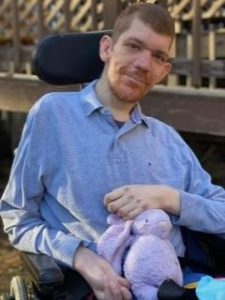 I took a deep breath, made an appointment with one of the rabbis, and shared our struggles. From that conversation grew a team to re-vision what a caring community at Temple Israel could look like that reflected the needs of our members at that time. Some of my closest friends hail from that experience.
I took a deep breath, made an appointment with one of the rabbis, and shared our struggles. From that conversation grew a team to re-vision what a caring community at Temple Israel could look like that reflected the needs of our members at that time. Some of my closest friends hail from that experience.
Between breaths, there were still struggles and doubts. Would my family fit in? Did it matter? What I discovered was that searching for answers with our clergy and fellow members, and looking for others with similar questions, created a sense of belonging. We worked together to build community. People knew me and greeted my son warmly. Each new question uncovered creative opportunities and I received the gift of immersion in a fascinating, diverse congregation.
In 2010 we opened the Riverway entrance. Through a gift from wise, dedicated and caring congregants, that front door became accessible to all with a beautiful ramp, and our sanctuary bimah was made accessible in the same way.
In 2020, in the midst of political and civil turmoil across the globe, Temple Israel was rethinking what community means, and how to face our own individual and communal biases. REDI, our own Racial Equity, Diversity and Inclusion initiative was born. There was a beautifully written, well researched, communally developed statement that focused on belonging, racial and gender equity and diversity, as it needed to be. But the disability community had been forgotten, overlooked.
I felt like the breath was knocked out of me. It seemed that every other marginalized group was mentioned, but we were left out. Was it intentional? An oversight? It might be hard to remember now, but before the pandemic normalized the behavior of taking a wide berth when someone approached you, it was not an uncommon occurrence with my son. I saw the discomfort in another’s eyes and felt it keenly, and I wanted it named, too.
Time for another breath. I was hurt. All marginalized individuals and communities gain strength from working with each other, whatever their differences. I could have stayed silent, tired from the relentless advocacy of many years in the healthcare, housing, educational, social systems. But this incredible place, holding those I knew and those I didn’t, had been with me through it all. We were in it together to fight fear and ignorance. I spoke to our clergy, staff and lay leaders. I shared my lived experience and what I had learned along the way. They listened. It took time and patience, of course. Changes were made.
My son’s needs have become greater, his ability to voice them weakened. I and others who love him try to understand the language he uses to express himself, especially when there are no words. I am not the only parent who is an advocate, mother and sole legal guardian for an adult who is completely dependent on others for their well being. There are so many unheard voices, even more so suffering with the effects of Covid. We must strain to hear them.
Longwood Towers, Temple Israel, group homes, houses, families, individuals, have a certain look on the outside but you do not know what is on the inside. How are we called to action for those who look different, act different, are different from ourselves? How can we be intentional as individuals and as a community? How do we move in and not fall out when we, ourselves, feel unheard, unseen, or hurt?
If we are lucky enough to have a voice, we must muster the courage to make change, to speak up for ourselves and for others whose voices are muted, each in our own way.
Reflect
Carol’s story raises some important considerations around the intersectionalities of racial equity, diversity, and inclusion work and highlights a disability justice perspective. She asks “How do we move in and not fall out [of community] when we, ourselves, feel unheard, unseen, or hurt?” Do you resonate with this question? When do you feel seen and heard at Temple Israel? When do you feel unseen?
According to the Centers for Disease Control and Prevention (CDC), about 1 in 4 adults in the U.S. have a disability, making the disability community one of the largest groups in the country. CDC data also show that a quarter of adults within this population identify as Black. For our work to be truly disability inclusive, we need to understand how racism and ableism are linked. (Source: Disability & Philanthropy Forum). How do you react to this assertion? Do you see connections within and between these communities?
Act
Temple Israel has developed an Incident-Response Protocol. When you experience or witness an incident at Temple Israel antithetical to our stated values and mission, we ask that you consider reporting your experience following the guidance in this protocol. We appreciate your feedback as we engage in this process.
DAY 4: 9/28/22
Story: Emily Greenstein
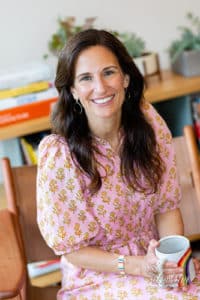 I often think of myself as a ‘helper.’ I genuinely like to assist others and provide support and comfort. As a white, middle-aged woman with financial privilege, I am realizing that by having this mindset, I often place myself in a position of power. I have learned to ask myself “What is my responsibility to this unearned privilege and to others who do not have the access to resources that I have?”
I often think of myself as a ‘helper.’ I genuinely like to assist others and provide support and comfort. As a white, middle-aged woman with financial privilege, I am realizing that by having this mindset, I often place myself in a position of power. I have learned to ask myself “What is my responsibility to this unearned privilege and to others who do not have the access to resources that I have?”
After participating in a Diversity, Equity and Inclusion group that met regularly at my daughter’s school, someone raised the issue of white people not having the ‘right to comfort.’ A similar theme was addressed during Temple Israel’s REDI Conversation with Religious School parents when communicating with people that are differently abled. Instead of asking ‘Can I help you,’ which assumes the person needs my help because they have a disability. Instead, I can introduce myself, the same way I would with anyone else, and then if they need my help, they will ask. By placing myself on a level playing field, there is room for other approaches, ideas, ways of doing things, and working more cooperatively and collectively rather than there being one correct way to do things. I am transitioning away from approaching situations with the intention of helping and more with the intention of participating on equal footing.
As part of the REDI Conversation, we engaged in an ‘Identity Exercise’ that specifically helped open my eyes to some unconscious bias I carried. I think of myself as aware and inclusive of others at the temple. I grew up as one of very few Jewish people in a white Irish-Catholic homogenous town. Also my mother was a lesbian. My awareness around issues of age, sexual identity, race, gender, socio economic status somehow did not include the awareness of a multiracial and ethnic Jewish community. It was an unconscious bias I had that most Jews were white and looked like me. I went home and had a conversation with my husband and children and together we learned about where Jews live and have come from, how they are often of different races, ethnicities, have different first languages (other than Hebrew) and still can be Jews- just like us.
I started this work in the ‘fear zone’ where I avoided the hard questions around racism and stayed where it was familiar and comfortable, mostly surrounded by others that looked similar to me. When I really listen more open heartedly and without my defenses I eased into the ‘learning zone’ where I could acknowledge my biases, more deeply understand my privilege, and see where I had work to do. After a handful of Elementary Education REDI meetings, I moved towards the growth zone where I could sit with my discomfort and (in some cases) shame. Now I am more able to speak out against discrimination in a variety of situations, engage more clearly with my husband and children around racism, and start to forge friendships and connections with others who think and look differently than myself.
The first step is always with awareness, for how can we change something we aren’t aware of?
Racism, classism, ableism, and ageism are the air we breathe. It is a long journey toward clearing away these biases and others. As a parent, I can model the values and ideas that are important to me. I can plant seeds of acceptance, equality, and the value of diversity in the lives and hearts of my children. That is how change happens. Slowly and consistently. Doing this work feels right, it feels ripe, it gives me hope. Starting with myself, then my family and then my community is the start of spreading this work into the world. But it all starts with me. The more I do, the more I see that I need to do.
Reflect
As a white woman, Emily talks about moving from the “fear zone” to the “growth zone” in conversations about racial equity, diversity, and inclusion. If you identify as white, which “zone” would you place yourself in? What do you think may help yourself or others move from fear to growth? If you identify as BIPOC, are there situations that you can recall where you have moved from fear to growth?
Emily talks about her experience as a parent and how she has brought some of her learnings to her children and family. What do you think the roles and responsibilities of children should be in REDI work? How might grown ups play a role to support children?
Act
Emily refers to Temple Israel’s REDI Conversations, an in-house conversation guide aimed at fostering a deeper sense of belonging in our community. Last year, Temple Israel reached almost 200 congregants through REDI Conversations and received highly positive feedback. This year, we hope to reach many more. Whether or not you have already participated in a REDI Conversation, we encourage you to do so in the year 5783. Please complete this form and we will reach out to you as we plan upcoming REDI Conversations.
DAY 5: 9/29/22
Story: Bram Lambrus
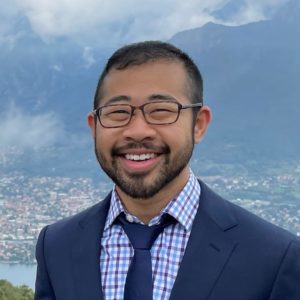 I first showed up at the doors of TI two months ago, at the most broken-hearted and vulnerable point in my life. As an Asian-American who was seeking solace and community during this desperate time, I want to share my experience of how welcomed I felt, and how this community’s inclusiveness has had a powerful impact on my healing journey.
I first showed up at the doors of TI two months ago, at the most broken-hearted and vulnerable point in my life. As an Asian-American who was seeking solace and community during this desperate time, I want to share my experience of how welcomed I felt, and how this community’s inclusiveness has had a powerful impact on my healing journey.
I grew up thoroughly atheist, raised by academic parents who instilled humanist secular values, but who devoted their lives to their work and did not seek or prioritize community. We were a small family that lived quite insular lives, and I had minimal exposure to any deep sense of community beyond small groups of friends bonded by common academic and recreational interests.
This all changed when I met the wonderful person who would become my partner through the pandemic. She was Jewish, and a very engaged member of the Reform Jewish community. She often spoke of how this community led her to see the pain in the world and feel a deep obligation to alleviate it in the ways that she could. She just felt so connected to all of humankind, and did not feel at peace unless she was working for justice and equality. Seeing how she lived her life, I, for the first time, could experience how profoundly fulfilling it is to live with this deep sense of connectedness and engagement with the broader world; to be driven by such clear purpose, working alongside like-minded activists to make the world a better place. I could see how incredibly enriching it was to live life this way, and grew to embrace these values and the depth of the human experience they opened up to me.
Unfortunately, as this world was so new to me, I was slow to build my own connections to the Jewish community and to learn how to spend my time aligned with these values. This grew to become a major disconnect in our relationship, and ultimately led to us parting ways. I was absolutely devastated by this – not only had I lost her beautiful presence in my life, but I had lost my link to the Reform Jewish community that I had grown to admire and take great meaning in over the course of our 2-year relationship. This break-up therefore felt doubly devastating, leaving a giant vacuum in both my personal life and my sense of community.
It is in times of crisis that people transform, and I sought to grow by building my own bridges to the Reform Jewish community. As an Asian-American who was seeking to make my first foray into Judaism on my own, I initially felt so unsure of where to start. When I searched “Reform Jewish temple Boston”, Temple Israel was among the top results, and what made an immediate impression were the candid community photos illustrating a diverse group of people – a broad range of ethnicities and gender identities that suggested people of all backgrounds were welcome here. This pointed inclusiveness, combined with the variety of ways to get involved in social action through TI, was an immediate draw for me. I thus committed to attending a service.
The day I first approached TI for my first live Shabbat service, I was less than a week out of my breakup, and feeling terribly lost and broken. I was seeking inclusion and healing, but feeling so vulnerable that the smallest perceived exclusion could have caused me to cave in and retreat. When I approached the garden where services were held, I saw that the entrance was kept watch by two men. I approached slowly, fully expecting to be inquisitioned, as I undoubtedly looked out of place – but they gave no sign that I was unexpected, and greeted me with smiles. This was the first relief. When I entered the garden, picked up a siddur, and took my seat, I looked around and saw I wasn’t the only person of color in attendance. This was another relief. And as services began and we were prompted to introduce ourselves to our neighbors, mine unreservedly reached out with introductions and welcomes, making me feel totally at home. When one neighbor noticed I had lost my place in the siddur, she helped guide me to the right spot. I felt wholly supported by the kindness of the people around me. And so my healing began – with such a warm embrace into the community, I was able to shift focus away from my anxiety, and toward the meditative power of song and reflection (where the prayer involving a “shelter of peace” was particularly soothing and protective at that moment).
It is thanks to those many small acts of inclusion that I was able to get my foot in the door of TI that day, which has since led to many enriching personal connections with members that have generously shared their support, perspectives on life, and conversion journeys, and has served to help guide me out of my despair and onto a path of personal growth and fulfillment. I am so thankful that this community demonstrated such acts of belonging at the most spiritually needy time in my life. My experience serves to remind me that you never know what inner battles someone may be fighting through – you may be catching a person during the darkest moment of their life, and it’s the small, inclusive acts during these times that can make the biggest difference to others. I commit to the self-awareness and positive intention needed to pay this warmth forward to the next person, and am further keen to contribute to the REDI work at TI, which aims to cultivate a sense of belonging for all through systemic assessment and effort. This is all part of my journey to align my actions to my values, and I am delighted to embark on this alongside passionate role models here in the TI community.
Reflect
In Bram’s search for Jewish community, he experienced many “reliefs” at Temple Israel. What were some concerns Bram had, and what did he discover that made him feel a sense of belonging?
Bram mentioned a sense of doubt when he saw security guards at Temple Israel’s entrance. Stories, news articles, and studies have shown the negative experiences BIPOC people can have with police and security guards. What feelings do police and security bring up for you? How might race or other factors of your identity and experience impact your feelings?
Act
Without changing or removing any aspects of Temple Israel’s existing security and safety practices, we plan to further increase our sense of safety and belonging by raising the awareness and skills of our community members to play an important and active role. We hope as many members of our community as possible will agree to learn some basic safety best practices as well as be warm and welcoming presences at our online and onsite events. If you are interested in being part of future conversations, trainings, and opportunities on the topic of community safety, please complete this form.
DAY 6: 9/30/22
Story: Heidi Smith Hyde
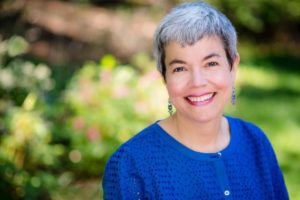 In August of 2021, I was hired to be Temple Israel’s Village Coordinator. The Village, led by Rabbi Suzie Jacobson, is TI’s place for families with young children (ages 0 – 5) to connect, learn and celebrate Judaism, while meeting new friends and having fun. As a relatively new staff member at Temple Israel, I feel proud to work at a synagogue that displays such a clear commitment to the principles of racial equity, diversity, and inclusion (REDI). As a staff, we regularly come together to share ideas, learn from one another, and engage in personal reflection and growth. We also have an opportunity to hear from lay leaders about the crucial work they do on behalf of Temple Israel and the community at large.
In August of 2021, I was hired to be Temple Israel’s Village Coordinator. The Village, led by Rabbi Suzie Jacobson, is TI’s place for families with young children (ages 0 – 5) to connect, learn and celebrate Judaism, while meeting new friends and having fun. As a relatively new staff member at Temple Israel, I feel proud to work at a synagogue that displays such a clear commitment to the principles of racial equity, diversity, and inclusion (REDI). As a staff, we regularly come together to share ideas, learn from one another, and engage in personal reflection and growth. We also have an opportunity to hear from lay leaders about the crucial work they do on behalf of Temple Israel and the community at large.
Recently, my colleagues and I talked about the words ‘welcoming’ vs. ‘belonging’ and what each implies. One generally welcomes a guest, but here at Temple Israel, we never want anyone to feel like a visitor in their own spiritual home. Indeed, there is a significant difference between feeling welcomed and feeling like one truly belongs.
As the Village Coordinator, I keep this distinction (along with REDI’s other values and goals) at the forefront of my mind every day. I want every child and caretaker at Temple Israel to know, without a shadow of a doubt, that they belong here. It’s my practice to greet families as they arrive for Village events, including Thank Goodness It’s Shabbat (TGIS), Playground Havdalah, and many more. Of course, greeting families is only the beginning. Fostering a culture of belonging means sharing, honoring, and celebrating our unique stories and identities. It means cultivating a space in which everybody is seen, heard, valued, and known. It means creating a community that truly feels like home.
Reflect
Heidi speaks of the difference between “welcoming” and “belonging”. Where do you feel welcome? Where do you feel that you belong? How do you see the difference between these two experiences?
Where in your life can you help foster a culture of belonging: cultivating a space in which everybody is seen, heard, valued, and known. What steps can you take, or have you already taken, to create this environment of racial equity, diversity, and inclusion? Particularly at Temple Israel, what role can you play to help foster this culture of belonging?
Act
Our REDI Culture shift strives to create a synagogue environment where all can feel that they belong here. Do you have a story where you have felt made to belong at Temple Israel? Or do you have a story where we have fallen short of our goals? We want to hear from you. Tell us your story here.
In order to better understand the breadth of identities of those in our community, we ask our community to answer some new optional questions on our database, including your racial and ethnic identities, gender pronouns, and accessibility needs. We encourage you to learn how to edit your information here.
DAY 7: 10/1/22
Story: Ari Zimmet
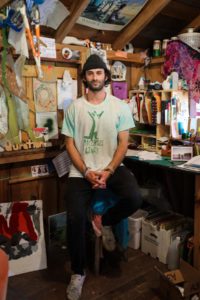 This past school year, I co-led a Racial Equity, Diversity and Inclusion (REDI) group focused on making institutional changes within Temple Israel’s inter-congregational teen community: The Tent. This Teen Education REDI Committee is one of three REDI groups focused on TI’s educational spheres with the others in the Youth and Adult Education communities. Our goals included building relationships in the pursuit of Tikkun Middot (internal repair) so that all of our learners can feel a true sense of belonging in our community. During the first meeting of the committed Teen Education REDI group, I felt relieved when, after we all introduced ourselves, one of our teens plainly pointed out an obvious fact that often goes unstated: “we’re all white,” they said.
This past school year, I co-led a Racial Equity, Diversity and Inclusion (REDI) group focused on making institutional changes within Temple Israel’s inter-congregational teen community: The Tent. This Teen Education REDI Committee is one of three REDI groups focused on TI’s educational spheres with the others in the Youth and Adult Education communities. Our goals included building relationships in the pursuit of Tikkun Middot (internal repair) so that all of our learners can feel a true sense of belonging in our community. During the first meeting of the committed Teen Education REDI group, I felt relieved when, after we all introduced ourselves, one of our teens plainly pointed out an obvious fact that often goes unstated: “we’re all white,” they said.
It was true, and I felt grateful it had been named by one of the teens, disrupting the idea that all-white spaces are unquestioned as “normal”. While our teen community is multiracial and multiethnic, everyone who was able to commit to the first Teen REDI group identified as white. Of course, our purpose as a group was explicitly to address racial inequity, so this certain homogeneity stuck out. I replied by affirming that was true; we had all introduced ourselves and identified as white. I asked how people felt about that fact. Their responses were both unsurprised and concerned. Now, make no mistake- immense amounts of labor towards REDI work in our community have been undertaken by members who also identify as Black and Indigenous People of Color. At the same time, our group’s members understood that their peers of color had plenty of reasons to hold off on joining the group, some having been repeatedly hurt by the ignorance of their white peers. The concern of our white group members stemmed from their awareness of their sizable privilege, and their doubts that they would be able to positively affect our community in matters of racial equity, diversity and inclusion without any experience as a racial minority. This conundrum is common in predominantly-white communities prioritizing REDI work. How can we, as white people, make change without unfairly burdening our community members of color?
We all agreed it wasn’t an ideal situation, and that we would proceed. Together, we read Pirkei Avot 2:21: “You are not obligated to complete the work, but neither are you free to desist from it.” I asked the teens and parents what success would look like for them. It was made unanimously explicit that part of our work would be to try to appropriately learn more about the perspectives from our peers of color and how we might make our group more racially diverse. There were many answers about decentralizing “Ashkenormativity” by introducing our community to the different foods, celebrations and practices of Jews of Color, Sephardic Jews, Mizrahi Jews, Indian Jews, Yemenite Jews and so on. We also spent much of our time discussing how we might attract more educators of color and students from different backgrounds so everyone in The Tent could feel represented. These are wonderful ideas, echoed across all of TI’s Education REDI groups, and would represent significant changes in education since I attended as a child and teen in Temple Israel’s Monday Night School. Still, I asked them to go deeper. How would we create a home for these new members to share their stories? What about the diversity that already existed within our community? How were we making space to explore and celebrate that?
It became clear that even amongst our group of “whities”, as a racial justice mentor calls her fellow white peers, there was diversity. Additionally, we learned that having white privilege didn’t mean all our needs in community were immediately met. We began to talk about students whose parents did not practice Judaism, as well as students who themselves had converted or were considering conversion. We reflected that we didn’t know much about why each teen had committed to showing up on Monday nights (after the B Mitzvah, the excuse of your parents forcing you only lasts a year or two). Members of our group admitted that they wanted to hear more from their peers about what they loved about Judaism, and what they struggled with. Without privileging our experience over anyone else’s, we began to delicately unwind the truth that we all had things to contribute on the road to true equity and liberation.
As time went on, group members shared about how their experience in our group had led them to notice small changes in their synagogues. When they planned Jewish programming for their secular schools, they made sure to include non-Ashkenazi traditions. We also experienced challenges as we went along our journey. At one point, we realized one of our intended initiatives was causing feelings of hurt to some of our teens of color. We listened, we reflected on our intentions, and we changed course. By the end of our year together, our group members had widened their target. While we still focused on attracting more educators and peers of color and other historically oppressed backgrounds, we were also creating ideas on how to promote equity, inclusion and diversity with those currently present.
It is my belief that as a white person, I benefit most directly from a culturally-enforced system that privileges whiteness over other racial identities. It is also my belief that for that very reason, dismantling systemic racism is an issue for white people to solve. Before my ancestors were white, they were Jewish. In America, fair-skinned Jews were eventually granted “whiteness”, and many families assimilated in – consensually and non-consensually – to this identity in order to provide for and keep their family safe. When faced with violence, scarcity, and uncertainty, there is safety in a monolith. At the same time, Jews are not a monolith, and we never have been, dating all the way back to the differences between the twelve tribes. As a predominantly-white Jewish organization, I believe Temple Israel needs to continue grappling with the “both/and” mindset needed to disrupt the status quo: how can we both stand together in community, and acknowledge, honor and learn from our differences. The answer begins with telling the stories of our differences and our needs, in order to take collective action to make sustainable change. As a white person, I both benefit from current oppressive systems, and as Jewish gender-nonconforming educator, I am also constrained by those same systems.
Beginning this year at The Tent, we will ask different members of our community to share about their relationship with Judaism as we finish dinner every week. We plan on calling these TentTalks. All of us have different experiences and connections to Judaism, and assuming otherwise limits our ability to learn from each other and show up as a fullest self. Learning about our differences, as well as connecting around our similarities, can foster greater community and deepen our understanding of each other and all of our unique connections to Judaism. This process of exploring difference will be both uncomfortable and joyous, which sounds a lot like what to expect on the life-long journey towards liberation.
Reflect
Ari describes the concern of the white REDI group member’s that they would not be able to positively affect our community in matters of racial equity, diversity and inclusion. What do you think about this concern? What do you think the roles are for white people and Black, Indigenous, and People of Color (BIPOC) people in this work?
In some ways, the fears of the members of the white REDI group came true when one of their initiatives had unintended consequences and caused hurt among members of color. Imagine yourself in the position of a member on the REDI team or as a teen of color impacted by the situation. How might you have responded? What questions would you have asked? What paths might you take moving forward?
Act
Temple Israel’s Education sphere consists of three REDI Teams in elementary, teen, and adult education. If you are connected to any of these three communities, we encourage you to consider joining one of these REDI teams. Contact Ari Zimmet for more information.
DAY 8: 10/2/22
Story: Carol Agate
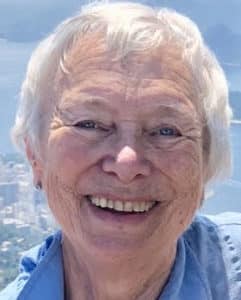 When I was six years old in 1940, I came down with scarlet fever. That was a dreaded disease in those days. I was hospitalized for the legally required 30 days. My sisters, who were much older at 15 and 17, were mortified, quarantined at home. The house had a large notice on the front door warning everyone not to enter.
When I was six years old in 1940, I came down with scarlet fever. That was a dreaded disease in those days. I was hospitalized for the legally required 30 days. My sisters, who were much older at 15 and 17, were mortified, quarantined at home. The house had a large notice on the front door warning everyone not to enter.
I wasn’t the least bit sick. Flash forward 40 years, when I was my parents’ chauffeur. One day when I took my mother to the audiologist I decided to get tested. I suspected I might have a hearing loss, and the test confirmed it. I saw an ENT, who explained that my audiogram showed what’s called a cookie-bite pattern, which meant I had perfect hearing at the high and low frequencies, but a moderate hearing loss in the voice range. That explains my 40 years of denial because I could hear a watch buried in a closed dresser drawer in a closed closet, but had trouble understanding what people were saying. The doctor said scarlet fever most likely was the cause of the hearing loss. The cookie bite meant I couldn’t get hearing aids because the amplification of those high frequency noises would be intolerable. Finally digital hearing aids were invented, which made it possible to adjust hearing aids so each frequency received different amplification.
By then I was a lawyer and interested in civil rights, working as a prosecutor and volunteering with the ACLU. It didn’t take long for me to switch from prosecuting, but I found defense work was difficult. In California the prosecutor sits right in front of the witness. As a defense lawyer I was sitting too far from the witness to be able to understand clearly. I switched to teaching and devoting time to a great civil rights case I took on for the ACLU.
As time went on my moderate childhood hearing loss was overtaken by age-related hearing loss and my civil rights interest turned to the discrimination I understood best. I joined the Los Angeles Hearing Loss Association chapter, and changed to the Boston chapter when I moved east. By then I was retired and continuing to lose more hearing, until my loss is now severe. I learned a lot in chapter meetings and at the hearing loss conventions. I discovered all the extra help that could be available.
Finding any place that complied with the ADA rules on accommodations for people with hearing loss was a struggle. Through self-advocacy I tried to promote access in every event I attended. I encouraged my friends with hearing loss to advocate for themselves because that’s the only way to get venues aware of what we need. It has been difficult to accomplish much.
When I first visited Temple Israel what a delight it was to learn that they have assistive listening devices for both the auditorium and the sanctuary. Unlike many places that also have devices, which are required in public venues, these worked, and the receptionist knows where they are. She carefully checks that they are charged, so I haven’t been given one with a dead battery. Here was a place that cared about accessibility. That translates to they cared about me.
Not too long after I joined the temple, came covid. All our activities moved to Zoom. For a while I had to rely on lip reading and my device that amplifies the sound from my computer. But after a year of advocacy on behalf of people with hearing loss, Zoom finally made captions available. However, they did nothing to publicize it. I notified all the organizations I belong to about the captions and sent the instructions for enabling them. Temple Israel promptly included captioning in their Zoom accounts.
It’s not surprising that Zoom hosts often forget to enable the captions. There are a lot of things to remember when hosting a Zoom meeting. When a Zoom window appears the first thing I do is click on the cc. Then, if the captions haven’t been turned on for that program the host automatically gets a reminder. Everyone who has hosted a Zoom program at Temple Israel turns the captions as soon as the reminder pops up. Many places that I am a part of still haven’t even enabled the captions. One wonderful plus at Temple Israel is Rabbi Zecher’s Modern Midrash classes. I can fully appreciate her excellent teaching because she has just about the clearest and best paced speaking voice I’ve ever heard. But since few people speak that clearly, assistance is needed.
Through TI’s REDI Communications work, I’ve been asked about things the temple could do better. With the technology that’s available now, there are endless things the temple could do. There has to be a balance between value and cost because some wonderful things like induction loops (which bring sound from a microphone directly into hearing aids) are more expensive than the value to congregants. Also, they are at risk of being replaced by newer, less costly technology.
My involvement with the temple is primarily with TILLI. There are many members of TILLI with hearing loss, but very few who use the Assistive Listening Devices (ALDs). Most probably don’t know they exist. I have learned that many people with hearing aids don’t know about ALDs, and many who would not want to use them because they have not been adequately explained or promoted. If the temple provided neck loops with them, I suspect a lot of people would use them after with some explanation and promotion
Due to societal and media stigma, many of us with hearing loss have fallen prey to feelings of embarrassment or shame. When I sit at a table in the auditorium I place my microphone in the middle of the table. When I explain it, many times a woman would say how she wishes her husband would wear hearing aids. Temple Israel could help take hearing loss out of the closet in several inexpensive ways, for example including captions and avoiding background music while anyone is speaking in videos. Instead of passively making ALDs available in the office for those who know about them, Temple Israel can distribute them in any meetings with amplification (explaining their use for the first few sessions). TI can look into ASR (auto-generated speech recognition) captioning programs that can be used with cell phone apps, and can play music only for music programs, not background music for social programs. That’s for a starter, and nothing there is more than a nominal cost. I’m grateful for the inclusion of more voices as we work together to make the synagogue an inclusive place for us all.
Reflect
Carol speaks of social stigma for those with disabilities that often impede people from receiving the accommodations they need. What are some additional ways we can work to take our racial equity, diversity, and inclusion work “out of the closet” as Carol suggests?
Carol suggests some particular communication strategies we can use to improve the experience of people with hearing loss and appreciation for adding more voices to the conversation. How do communication strategies impact whether or not people feel like they belong?
Act
As part of Temple Israel’s REDI initiative (Racial Equity, Diversity and Inclusion), the REDI communications team is assembling a diverse group of congregants who can work with TI content creators to assure that the language, sound, photos and videos amplify an essential part of Temple Israel’s mission: You belong here. This group works at their own pace, accessing temple communications of interest and sharing their perspective. If you would like to learn more about this or share how or when Temple Israel content has made you feel welcomed or excluded, let REDI Team member Ellen Clegg know.
DAY 9: 10/3/22
Story: Malcolm Freeman
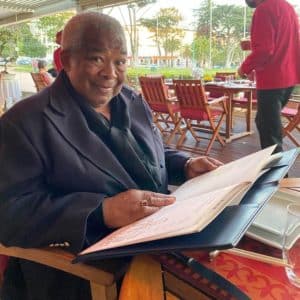 To tell my #10Days10Ways story, I have to go way back to when I was a little kid. My whole life, I knew I wasn’t seen by others in the way I saw myself. I come from as mixed a family as you can get. My mother is blonde with African, Dutch, and American Indian ancestry. Going through my family tree I can list the relatives with fair skin and blonde hair, and the ones who look like me: the ones with dark skin. Religiously and culturally we were all over the map, with Judaism being a very important piece of my identity. As a young child I was keenly aware of the importance of how one talks, the importance of skin color, hair texture, and who one’s relatives are. My mother would counsel me and my brother as we navigated life as a mixed-race family. As I have aged, I’ve been accused of not being black enough due to certain outlooks or perspectives I have taken over time. Looking back, my intentions in this work have all been predicated on identity: who is Malcolm Freeman? Who am I supposed to be? The journey to here has not been easy, but my search for identity is what has kept me going.
To tell my #10Days10Ways story, I have to go way back to when I was a little kid. My whole life, I knew I wasn’t seen by others in the way I saw myself. I come from as mixed a family as you can get. My mother is blonde with African, Dutch, and American Indian ancestry. Going through my family tree I can list the relatives with fair skin and blonde hair, and the ones who look like me: the ones with dark skin. Religiously and culturally we were all over the map, with Judaism being a very important piece of my identity. As a young child I was keenly aware of the importance of how one talks, the importance of skin color, hair texture, and who one’s relatives are. My mother would counsel me and my brother as we navigated life as a mixed-race family. As I have aged, I’ve been accused of not being black enough due to certain outlooks or perspectives I have taken over time. Looking back, my intentions in this work have all been predicated on identity: who is Malcolm Freeman? Who am I supposed to be? The journey to here has not been easy, but my search for identity is what has kept me going.
Six years ago, a group of us sat around a kitchen table over dinner and imagined Temple Israel’s first ever #10Days10Ways Racial Justice Experience. Together, we came up with activities, reflective questions, and actions we could take as individuals with the goal of providing a path for the community to intentionally take part in the ten days of awe through a lens of racial equity. I was very excited about this opportunity. Up until around this time, my Jewish identity had been mostly ritual, and I had yet to engage more fully in the social justice aspects. I live this social justice piece every day, I thought at the time. But as I was noticing a rise in exposure of black people in art, in politics, in the media, I was also noticing a rise in open white supremacist thinking, and a rise in personal negative experiences relating to racism. In my quest for discovering Malcolm Freeman and my constant inner investigation asking “who am I supposed to be?” I came to the realization that it is my responsibility to speak up when I see myself being marginalized. With #10Days10Ways, I saw a clear, meaningful opportunity to contribute and share my perspective.
Over the past six years, #10Days10Ways has been an evolution based on the societal and communal circumstances of the time. One year, we partnered with Bethel AME Church on #10Days10Ways and during that same year, we watched a movie called “Shared Legacies: The African American-Jewish Civil Rights Alliance”. This movie is one of the best examples of people noticing injustice and coming together to forge relationships across lines of similarity as well as lines of difference, and fight for a common good. Due especially to the pandemic, my concern is that society has lost the magic of person-to-person interactions and #10Days10Ways evolved from being activity-based to being centered on personal stories. I see #10Days10Ways as a vehicle to deepening relationship building within our community and helping us to keep those relational opportunities alive.
Now, six years later, #10Days10Ways has helped us launch Temple Israel’s Racial Equity, Diversity, and Inclusion (REDI) work, and true to being Malcolm Freeman on a journey to discover Malcolm Freeman, I am on the leadership team particularly responsible for the REDI Conversation effort. The REDI Conversations are designed to get our community talking to each other about themselves and about each other. I believe that if we come together as a united group, we can do so much more collectively than as individuals, and I hope that through the REDI Conversations we can live Temple Israel’s mission statement of living Judaism together as we form deepening connections.
I won’t lie and say that this work is always easy. Through this REDI work I have had to put myself out there as a black man in the Temple Israel community and ask other people to care about this as much as I do. Sometimes, I don’t get the reaction that I had hoped for. While there are many reasons for this, one that will always cross my mind is wondering whether it’s because of my race? But what keeps me going are my intentions, which above all else are centered on relationship building. By always turning to the relationship, I can engage in conversation with those whose intentions I may be curious about, and learn about them and their driving forces. Even when this work is difficult, I forge on. I am not satisfied with the status quo, and the further this work takes me, I gain the sense that we are moving in a positive direction and accomplishing something worthwhile.
Through this work, I have been able to come to the realization that my identity does not need to be found. No longer am I trying to prove to others that I am not as they expect me to be. I am no longer fighting myself anymore to prove that I am the real Malcolm Freeman. What I have become very happy to learn is that I already am who I am. I am here. Some time ago, I would have stayed silent. Being silent meant that no one could judge me. It meant that no one could misrepresent me. No one would be able to hurt me with my own insecurities. Now I know that I have to put myself out there and speak up. Please consider joining this effort with me. Without you, we are missing an important voice in the conversation. I have all my own biases just like everyone else does that get in the way, and I have learned something about myself through REDI Conversations which allows me to be more open to others around me and see the humanity in others. It reinforces my resolve to keep going. Please consider this. A true culture shift is within our grasp. I hope you will join us.
Reflect
Malcolm says, “Through this REDI work I have had to put myself out there as a black man in the Temple Israel community and ask other people to care about this as much as I do.” Have you ever put yourself out there for something you care deeply about? If yes, how did that feel? How did it go? If not, what prevented you from acting?
Malcolm is deeply invested in relationship building and it’s what drives his work. Can you think of a relationship that has challenged you to change your perspective with a positive outcome?
Act
Malcolm implores the community to consider joining him in the REDI effort. After reading his and others’ stories, what skills, life experiences, time, resources, or relationships can you bring to the REDI work? What steps will you take to join the effort in 5783? Email Tali Puterman or Nancy Tauber to get involved.
DAY 10: 10/4/22
Today concludes the #10Days10Ways experience for this year. Racial equity, diversity, and inclusion work will continue to be an important aspect of Temple Israel’s culture and the actions we take as a community. Whether you have done so in the past or whether this be your first time, we encourage you to take a look at our past #10Days10Ways Campaigns. You can find them here. You may listen to the stories or take part in the suggested activities throughout the course of the year or beyond. We hope to see you at a discussion tomorrow, Yom Kippur afternoon at 2:30 p.m. both onsite at Temple Israel, and online. We hope that this active dialogue will help us to appreciate the content in a new way, and elevate our learning together on this holiest of days.
